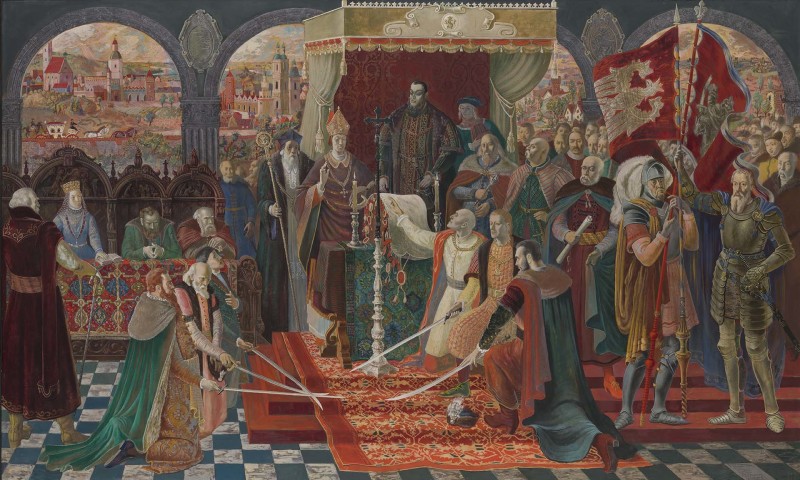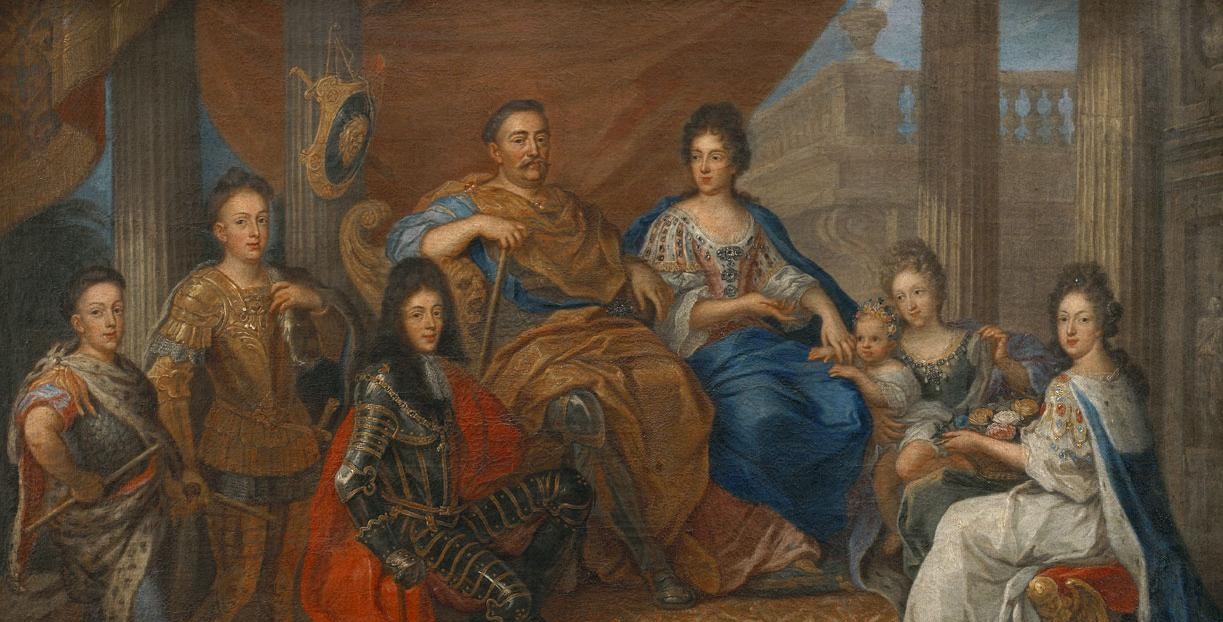On 30 April 1939, US President Franklin Delano Roosevelt and Albert Einstein officially opened the New York World’s Fair. Before this could happen, a group of artists, people from the fields of culture and science, as well as government representatives, had been working intensively for over a year on the Polish Pavilion. The idea behind it became clear: Poland meant nearly a thousand years of statehood and a unique culture based on unchanging values.
by Michał Przeperski
In the twenty years that followed the First World War, the country could boast new achievements, but it was difficult to impress the city over which the Empire State Building towered with infrastructural development. The port of Gdynia, the Central Industrial District, the mines of Upper Silesia – all the things Melchior Wańkowicz wrote about in Sztafeta, the most popular reportage piece published in the Second Polish Republic – were proof of our country’s modernity. The creators of the pavilion, however, were looking for something different. At the time, was there anything exerting more impact on collective imagination than reportage? Of course: monumental painting.
‘Seven paintings […] designed to illustrate the greatest development of Polish culture at a time when Poland was one of the most superb European powers’ was the idea behind the central part of the Hall of Honour of the Polish Pavilion in New York. The occasion was, after all, unique. Representatives of sixty countries were to descend on American soil, not only to celebrate their own achievements, but also to demonstrate their roots. Poland was, after all, not just a ‘by-product of the Treaty of Versailles’ but the heir of a centuries-old tradition. And the world was to learn about it.
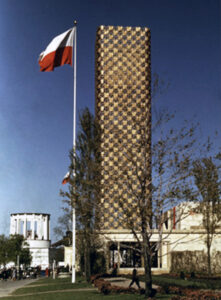
That is why the seven panoramic canvas paintings displayed at the heart of the Polish exhibition pavilion were to be so important. Likewise, no wonder that careful consideration was given to what content they should illustrate. The head of the Polish Ministry of Foreign Affairs, Józef Beck, pressed for focusing on historical themes, yet the selection of specific events was left to experts. After stormy deliberations, a commission of historians headed by Professor Oskar Halecki selected those historical moments which most fully represented Poland’s glory. In this way, a manifesto for a conscious historical policy was created.
Every step was thought through, from the subject matter to the performers. ‘St Luke’s School was chosen because its technique most closely relates to tradition, while at the same time being ultra-modern,’ wrote the Polish exhibition commissioner Stefan Ropp in a letter to Stanisław Lorentz. The circle of painters popularly known as the Brotherhood of St Luke, centred around Warsaw’s Academy of Fine Arts professor Tadeusz Pruszkowski, was not an obvious choice. It was probably the belief that this group was best qualified to create historical works – modern in form but full of respect for detail and the painter’s craft – that prevailed. This made it possible to portray Poland as a country moving with the times, but duly respecting its rich past.
Let us take a look at the turning points in national history that were considered worth showing to the wider world. Chronologically, the first was the meeting of Prince Bolesław the Brave with Emperor Otto at the tomb of St Adalbert. This event, unquestionable to historians in terms of source, was one of the oldest testimonies to the efficient functioning of the Piast state (1000). It was also the moment when the Polish leader was treated as a partner by the most important ruler of Western Christianity. No-one who has seen this painting could doubt that it is part of the history of an ancient nation. A nation whose statehood predated that of America by eight centuries.
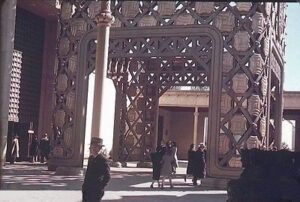
The Adoption of Christianity by Lithuania was the title of the second painting chronologically (1386). First, it referred to the landmark binding of the destinies of Poland, Lithuania and Ruthenia in a single statehood. Second, no less importantly, it confirmed Poland’s role as an important link in the Christian world. Symbolically – but also unequivocally – this placed our country in a civilisational framework that was also comprehensible to Anglo-Saxons. In the latter respect, the chronologically third of the paintings was even more important, presenting the granting of the Jedlnia privilege by King Władysław Jagiełło (1430). ‘We will not imprison anyone without a court sentence,’ the ruler of Poland and Lithuania pledged at the time. His subjects waited two and a half centuries longer for a similar assurance from the English king. And no American needed to be convinced of the importance of this principle. In fact, it is enshrined in the Constitution of the United States, its very first article.
The fourth painting, The Union of Lublin, showed the symbolic foundation on which the Polish-Lithuanian Commonwealth (1569) was formed. Its political nation was made up of masses of nobility, approximately ten per cent of the total population of a state with an area of nearly one million square kilometres. While this is not impressive today, it was different in the late 1930s. The praise of nobility-driven democracy left no doubt: Poland is alien to both brown German totalitarianism and red Soviet totalitarianism. Another painting, paying homage to the Warsaw Confederation (1573), presented Polish tradition in a similar vein. This document, which introduced religious freedom for the nobility, was a testimony to a unique political culture that had no precedent in 16th-century Europe. Freedom – this is the gene of Polish culture! Freedom as an antidote to unified thinking, the terror of the NKVD and the German concentration camps.
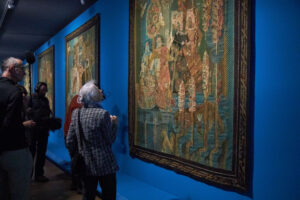
The carefully thought-through selection culminated in two more events. The Battle of Vienna – presented King John III Sobieski and his undisputed victory over the mighty Ottoman army, which marked the beginning of the end of its expansion and tore up Turkish power (1683). The effect of the success was to remove the threat from the Christian world. No one could doubt: in defence of their most important values, the Poles would make all necessary efforts, also sacrificing their blood if needed. In the thickening atmosphere of the final months before the Second World War, this was clearly evident. No less important was the painting showing the adoption of the Constitution of 3 May. It was on the 148th anniversary of the event, on 3 May 1939, that the Polish Pavilion at the New York World’s Fair was ceremonially opened.
Freedom, republican tradition and love of sovereignty – these values can be seen in the paintings made by the members of the Brotherhood of St Luke. They are subtly complemented by another element: community. Without it, the seven 120 x 200 cm canvases could not have been created. The eleven painters produced a great teamwork, with mutual respect for one another’s expression and with the sense that their individual skills would be best realised in working together. In the words of a researcher of the subject, ‘it was an extraordinary, collegiate painting experiment, the only one in our twentieth-century history’. The commission the Brotherhood members received in the spring of 1938 was very ambitious. Working tirelessly, they fulfilled it brilliantly, and in less than six months!
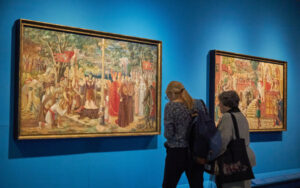
In December 1938, the works commissioned by the Polish Government were presented to the Warsaw public. However, history took a different course: they did not return home until 83 years later. Today, they are on full display at an exhibition at the National Museum in Warsaw. They will soon grace the interiors of the Polish History Museum.
The paintings of members of the Brotherhood of St Luke and Szymański’s tapestries will be on display at the PHM exhibition The Brotherhood of St Luke: the Great Homecoming presented at the National Museum in Warsaw from 29 September until 13 November 2022.
A collective work of the artists Bolesław Cybis, Bernard Frydrysiak, Jan Gotard, Aleksander Jędrzejewski, Eliasz Kanarek, Jeremi Kubicki, Antoni Michalak, Stefan Płużański, Janusz Podoski, Tadeusz Pruszkowski, and Jan Zamoyski, 1938
Polish History Museum, a deposit of the State Treasury – Minister of Culture and National Heritage, inventory number MHP-DEP 727/4
Author: Dr Michał Przeperski, Polish History Museum

